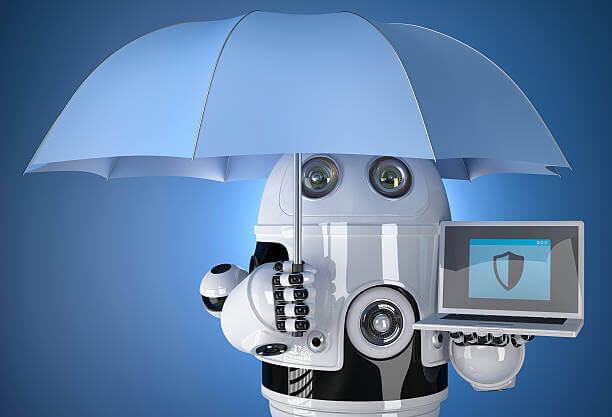Introduction: What is Robotic Process Automation?
Robotic Process Automation (RPA) is a form of automation that allows enterprises to use digital processes to automate routine, repeatable tasks.
RPA is a process that can be used to automate repetitive tasks, such as data entry. RPA allows enterprises to save time and money by digitizing processes and cutting out the need for middle-man labor.
Robots are machines programmed to perform certain tasks automatically. They are often used in manufacturing, logistics and in the military as well to complete dangerous or difficult tasks.
ROI of Robotic Process Automation
Robotic process automation is a technology that is used to automate the processes of business. It can be used to automate any task that can be performed by a computer.
It has been predicted that robots will take over human jobs in the future. This article will explore the ROI of robotic process automation and how it may affect our economy for the good in the future. In recent years, there has been an explosion in the use of RPA in the workplace. This has been mainly been due to the increased sophistication and availability of AI software.
Replacing a human’s time-consuming and repetitive tasks with a robotic process automation system, known as RPA, has been slowly increasing in popularity over the past decade. These systems can be used for tasks such as data extraction, data processing, and various other analytical processes that can be automated by an AI. The return on investment a company can get out of implementing effective Robotic Process Automation is huge! Less human errors, more efficiency, and low maintenance are a few benefits to start with.
How to Implement Robotic Process Automation in Your Company
Robotic process automation is an emerging technology that has been used in various industries to automate routine, repetitive tasks. It can be used to reduce the time and effort required for a task.
Robotic process automation is software that performs automated tasks based on a pre-defined algorithm or program. It can be programmed to do anything from data entry to credit card fraud detection. RPA allows a computer to control and automate the execution of tasks.
Robotic Process Automation software system allows a computer to control and automate the execution of tasks. The process automation tool takes over repetitive, high volume, or complex tasks from humans. RPA can be used in different industries such as healthcare, finance, manufacturing, and more.
What is Robotic Process Automation And How Can It Help Your Business?
RPA can be used in a variety of ways, from automating simple data entry to more complicated tasks such as form filling and data processing. The main aim of RPA is to increase efficiency and reduce costs by reducing the need for human labor.
RPA is a technology that can be utilized in many ways. It can automate simple data entry, more complicated tasks such as form filling and data processing. RPA automation is used to increase efficiency and reduce costs while increasing accuracy and decreasing time spent on menial tasks.
Robotic process automation (RPA) is software that automatically performs the repetitive tasks of the organization. It is also referred to as “software robots” or “bots” in some places.
RPA can help you in many ways, such as by automating tasks that are time-consuming and repetitive, freeing up your employees to do more important work.
Robotic Process Automation for Financial Services Companies
Robotic process automation software is a new way for financial services companies to automate mundane and repetitive tasks.
Robotic process automation software is a new way for financial services companies to automate the mundane and repetitive tasks that are done on a daily basis. This type of software can be used to automate customer service, trade order management, and compliance.
Customer service is one of the most expensive and time-consuming aspects of any business. Incorporating these new technologies can help reduce costs and free up employees to work on more important projects.
RPA software has been around for a while, but it’s only recently that it’s been making its way into the finance industry. This is due to the fact that a lot of financial services processes are repetitive, and can be easily automated with RPA tools.
Using RPA for Logistics – Best Practices and Case Studies
Robotic Process Automation (RPA) is software that automates the workflow of an organization. It works by analyzing an organization’s processes, identifying key tasks, and automating them to reduce time and effort.
RPA can be used in logistics management to automate the task of data entry for manual order processing, order picking, and inventory management.
The benefits of using RPA in the logistics industry are reduced costs due to reduced labor costs, increased accuracy due to elimination of human errors, improved customer experience due to reduced lead times for orders
Case Study of Bailys Department Store Using RPA to Improve Efficiency & Increase Productivity
Bailys Department Store is a large retail company in the UK. They were looking for a way to increase productivity and efficiency across their business. After realizing that they were not able to hire enough people, they looked at using RPA.
RPA was able to automate many of the manual tasks that Bailys Department Store had been doing. It was able to help them get rid of repetitive tasks which had been taking up too much time and focus on more important work instead.
Three Common Misconceptions About Robotic Process Automations That You Should Know About
Robotic process automation is a software that automates certain tasks in an organization. Clavis Tech is one such company that provides automated software for business processes.
There are many misconceptions about robotics process automation and we should know what they are and how to tackle them. The first misconception is that the Robots will replace all humans in an organization. This is not true as it can only automate certain tasks and not all of them.
The second misconception is that the RPA will be able to do everything on its own without any human intervention. This too, is false as it needs human supervision at the least to make sure it does not break down or do something wrong.
The third misconception is that robotics process automation will take away jobs from people who are already employed by the company.
Some other posts you might be interested in.

Mauritius and MNIC 3.0 – Driving the Digital Transformation in East Africa
On February 26, 2024, the Prime Minister of Mauritius, Mr Pravind Kumar Jugnauth, unveiled MNIC 3.0, the latest iteration of the Mauritius National Identity card. Speaking on the occasion, the Prime Minister stated, “The new card reflects our commitment to modernity,...

CMS and DAM: Why your business needs both
With the enhancement of technology, consumers require flawless experiences in everything they do. Be it at home, with their smartphone, car, or work-space, the ease of handling tasks should be at the snap of a finger. To have a seamless experience at the workspace,...

15 Applications of Blockchain in Healthcare
"Blockchain" refers to a shared irreversible record of a chain of transactions, each of which is made up of one block, and which is held together by cryptographic keys ("hashes"). These keys or signatures are maintained in shared ledgers and connected by a network of...
